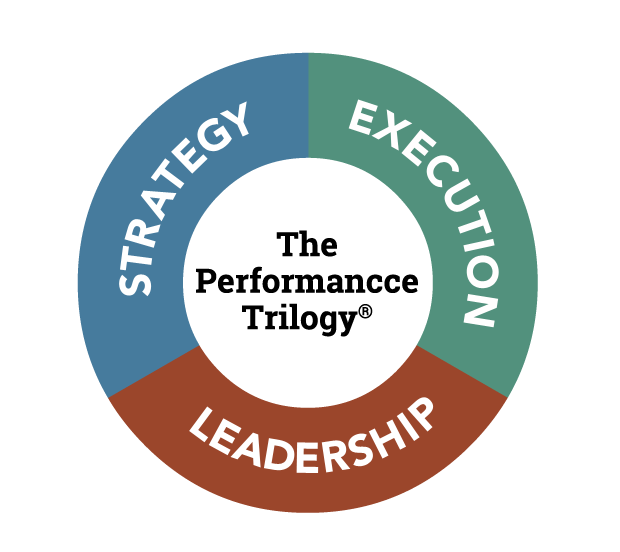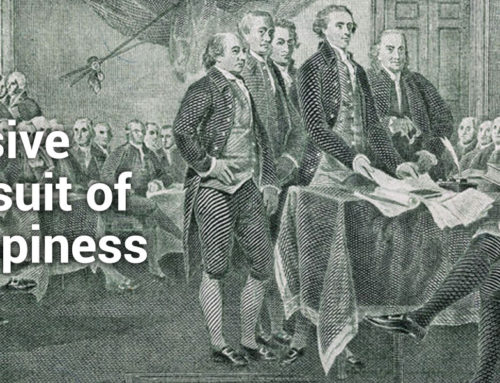The business literature today provides an overwhelming array of leadership and management articles and books. This literature is not as helpful as it could be. On the one hand, they are written for fellow experts and introduce new and oftentimes confusing, complex theories and language to describe management processes. On the other hand, there are many articles and books written for novices describing quick management fixes and magic bullets to solve all their problems. This article is not about new theories or quick fixes but presents a point of view that there are leadership fundamentals that must be mastered to truly attain sustainable high performance. The degree of complexity in today’s organizations has reached the point that even experienced managers are having a hard time focusing on the key activities that lead to high performance and successful initiatives.
Earlier in my career, I received some sage advice from one of my mentors that had a dramatic effect on my performance as a manager and leader. He stated, “whenever I reviewed a failed initiative in our company, it invariably was due to either a faulty strategy, poor execution, or the wrong leadership”. Ever since then, I have focused my attention on the three core processes of strategy, execution, and leadership whenever I took on new assignments. As a senior manager at two of the leading technology and management consulting companies in the world, Battelle Memorial Institute and Arthur D. Little, I managed to turn around four operating divisions on three continents that had lost their technological edge and were losing money. In all cases, my diagnosis identified a problem with one or more of these three core processes: strategy, execution, and leadership.
In one case, the strategy was clearly faulty. Markets had shifted dramatically, and the organization was wedded to the past, missing new opportunities in an emerging market. In two other cases, the loss of several clients and resulting financial losses were incorrectly attributed a high cost structure when in reality project execution was not meeting client expectations. In another case, the key leader had left the organization and there was no leadership backup or depth to continue a successful operation.
In my first turn around attempt, it took me about three years to return the organization to profitability and develop a stable client base. The first year was spent diagnosing the problems and evaluating the existing leadership team. Armed with this information, the strategy was revised, execution more closely managed, and the right leadership put in place in year two. We saw dramatically improved results in year three. While successful, there were many lessons to be learned. I got better and faster over time in the diagnostic process such that I now am able to pinpoint major organizational problems much more quickly.
I am committed to improving the quality of leadership in science and technology (S&T).
My mission is to pass on the many leadership lessons learned from my experience to the next generation of scientists and engineers to enable them to create business and societal value from science and technology. By focusing on these three core processes; what I call the Performance Trilogy®, you can avoid the myriad of distractions that interfere with you and your team’s ability to keep your eye on the target.
Strategy – The process of developing the blueprint
Strategy is truly the blueprint of performance and in my experience most strategic plans are not compelling enough. Most strategic plans suffer from ignorance, arrogance or both. Oftentimes plans are written with minimal information about the real needs and desires of clients and team members. Worse still, critical resources and team capabilities are overestimated, and competition underestimated leading to failed strategies right from the start.
Strategic planning involves developing a vision (where you want to go); a strategy (how you are going to get there); and a resource plan (identifying all of the resources you need at the right time and the right place). It takes into account all of the potential barriers and resource constraints you can think of that you might encounter and develops alternative scenarios that overcome those barriers. You can obtain generic strategic plans from any good management consulting firm but the content that goes into your plan must come from those knowledgeable about your capabilities, clients and competitors.
The definition of strategy is the allocation of scarce resources. The reason why strategy is the first core process and is so critical to performance is that it narrows down the myriad number of activities to a manageable few. You and your team need to focus only on those activities that will lead to achieving your vision. If you had unlimited time, money and resources a strategy would be less important for you could cover many options and perform multiple essential and non-essential activities until you reached your destination or goal. But since resources in the real world are finite, they must be carefully focused on essential activities that produce results. The larger the team gets and the more layers of the organization, the more difficult it becomes to focus everyone’s attention. A compelling strategy provides clarity and focus.
Execution – The process of translation and alignment
The second process of the Performance Trilogy® involves translating the strategy into actionable objectives and managing to those objectives. This is easier said than done. In my experience, I have rarely seen this translation done very well for two reasons. First, individual team members have personal agendas that do not align 100% with the proposed strategy. Second, senior leaders incorrectly assume that this translation deals with operations, not strategy and delegate it to their subordinates.
Translating the strategy into an action plan with actionable objectives must be done jointly between you and your team members. This is usually done annually or biannually through a formal performance management process. More importantly, objectives should simultaneously support the strategy as well as the personal goals of each individual. This is a good definition of “alignment”.
Each of the team member’s objectives must be directly linked to the advancement of the strategy such that the output of each objective results in the desired strategic
outcome. This requires practice and experience to do well. The minimum requirement should be at least a 70% alignment (i.e. 70% of the objective’s output contributes to the strategic outcome). Any percentage lower than that would require a serious re-examination of that team member’s suitability for and/or willingness to take on the assignment.
Unfortunately, too many managers view the annual performance planning and review process as a necessary evil and an undesirable chore. After reading this article, I hope that it will increase the awareness of the importance of performance planning as an element in the core execution process.
Once the strategy is developed and an action plan put in place with actionable objectives, the leader must take off his leadership hat from phase one and put on his management hat for phase 2. There is a common myth that is widely accepted as fact that a senior manager’s job is to focus on strategy and not get his or her “hands dirty” with operational issues. Nothing could be further from the truth.
Many a good strategy has failed from poor execution due to senior managers who “abandon” their direct reports once a performance plan is produced. It is the responsibility of the senior leader and architect of the strategy to ensure not only that the strategy gets translated into actionable objectives but also that performance is managed. This is accomplished not by micromanaging but by regular governance on the progress of objectives. This involves supporting each team member with identifying shortfalls, determining lessons learned, and correcting deficiencies.
Leadership Development – The process of continuous improvement
The third process of the Performance Trilogy® is leadership development, be it at the individual, team, or organizational level. While high performance can be achieved in the short term with a compelling strategy and good execution, it is not sustainable in the long term without the development of staff capabilities at all levels.
We all know that the pace of technological advancement is such that it is very easy to fall behind. If you tried to conduct a new initiative with staff that was brought to the present time from the 1990s, they would have a great deal of difficulty succeeding. Technological change is such that knowledge worker productivity has increased by an order of magnitude over the past 15 years. Our ability to collect, process, file, and retrieve data today would astonish workers from the 1990s.
By development I mean the continuous improvement of a person’s awareness, skills and attitudes that will ultimately contribute to higher performance. This is the core process that I find is the least well practiced. All too often, development plans are an afterthought in the performance planning process, not taken seriously enough, and rarely aligned with actionable objectives and expected future performance. Too many managers view development as cost rather than an investment despite the proven fact that it has a very high return on investment. High performance depends on skilled and motivated staff and a well-designed and executed development program increases both.
I was impressed with a story that was passed on to me by one of my associates of a discussion between the CEO of a company and the head of Human Resources. The HR manager was questioning the amount of budget allocated for training. He asked, “what if we invest all this money and the staff decide to leave”? The CEO’s response was “what if we don’t invest in their training and they decide to stay”?
Graffeo and Associates is an organization committed to improving the quality of leadership in science and technology (S&T). It was formed in 2008 around the expertise of Dr. Tony Graffeo, a senior executive from Arthur D. Little and Battelle Memorial Institute. Dr. Graffeo has consulted with leading research institutions in the United States, Europe, Latin America and the Middle East, and has created a codified system of leadership development centered around the principles of the Performance Trilogy® which he has taught throughout the world. He is currently a professor at Northeastern University teaching Professional Masters entrepreneurship and leadership courses. His new book, titled “Leading Science & Technology-Based Organizations: Mastering the Fundamentals of Personal, Managerial, and Executive Leadership” will be published in 2018.



